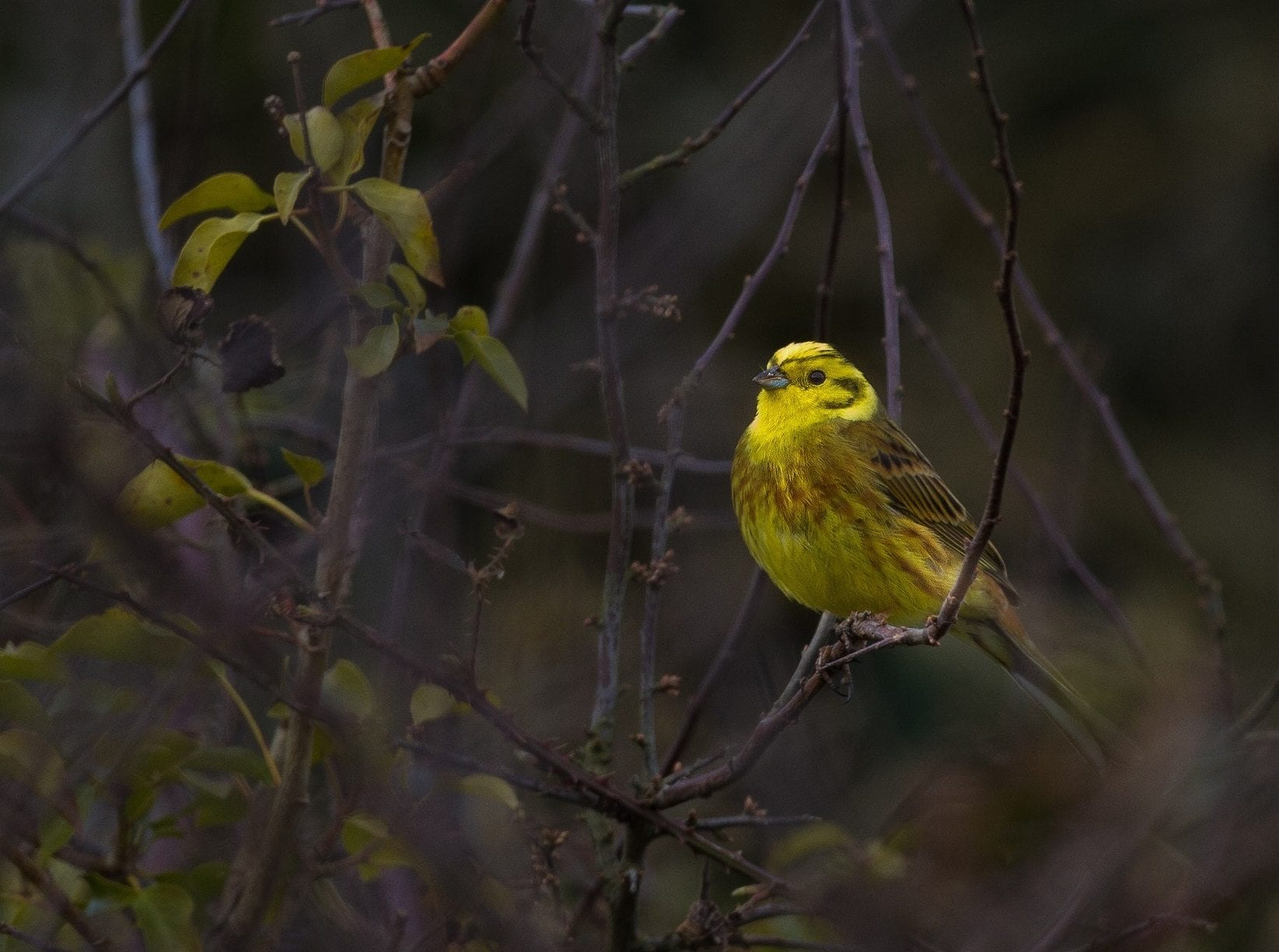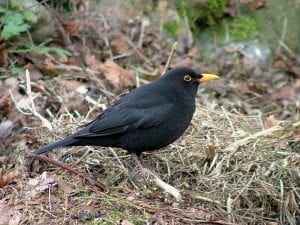Every March 1st, reminders of the annual hedge-cutting ban are disseminated and rolling in behind them are jokes and comments alluding to birds and their strict schedules.
Of course, birds don’t maintain annual calendars like you or I. If they did, things would be much more clear-cut! However, their behaviour including nesting and migration is tied to seasonal shifts. The rising temperatures and longer hours of daylight ushered in by spring prompt the beginning of nesting season for wild birds. The hedge-cutting ban is in place to prevent the destruction or disturbance of their nesting sites.
Blackbird. Photo: Jerry Cassidy.
Springing into nesting season
At present, the cut-off point for hedge-cutting is informed by the best available data. With the subject understudied here in Ireland, much of what we know about nesting is derived from UK data, specifically, the British Trust for Ornithology’s Nest Record Scheme (NRS).
Based on the information we have, March 1st is considered an appropriate time to stop hedge-cutting for most nesting birds. However, in reality, it is likely that the nesting season begins much earlier in Ireland than in the UK owing to our milder climate. We also know that some birds nest earlier in the season. Data from the BTO Nest Record Scheme shows that some species such as Blackbird and Robin can nest much earlier than March 1st, with records of both species nesting in January (or even December) becoming annual.
As the ongoing climate crisis drives global temperatures up, it is possible that “early nesting” will become the norm, rather than the exception. Indeed, a US study published in the Journal of Animal Ecology showed that one-third of 72 bird species studied are now nesting significantly earlier than they did historically. These species, which include Blue Jays and Field Sparrows, are now laying their eggs on average 25 days earlier than 100 years ago.
Robin. Photo: Brian Burke
Late-nesting birds
While August 31 currently marks the end of the ban on hedge-cutting, that is not to say that all chicks will have fledged by this date. Once again, things are a bit more complicated than that.
Initiated in 2017, BirdWatch Ireland’s Late-nesting Bird Project collected information about Yellowhammer and other bird species such as Goldfinch, Greenfinch and Blackbird that may be nesting in hedgerows in August and September.
A large pool of recorders in 20 counties were asked to note breeding evidence of hedgerow nesting birds in August and September. In order to avoid disturbance, they were asked to note breeding evidence as opposed to actively searching for nests. Breeding evidence includes a singing male, a bird carrying nest material, an adult carrying a fecal sac or food, agitated behaviour, and more.
The results showed that Yellowhammer in particular nests well into August and September. The Yellowhammer is a Red-listed species of Conservation Concern, meaning that it is at the highest level of conservation concern and in danger of extinction. Failure to acknowledge and protect late-nesting species by adhering to the current legislation could lead to the quiet chipping away of what remains of this wonderful species.
Yellowhammer were not the only species shown to nest into the autumn months. The next most regularly recorded species during August and September were Goldfinch (19), Greenfinch (16), Woodpigeon (10) and Blackbird (9).
Once again, we must not lose sight of the impact of climate change. As temperatures increase, it is possible that more birds will nest late into the year.
Yellowhammer. Photo: Colum Clarke.
Calls for change
In recent weeks, there have been calls to extend the hedge-cutting season to allow for the cutting of hedgerows into March following a period of poor weather that rendered it challenging.
BirdWatch Ireland opposes any shortening of the period during which cutting or burning of vegetation is banned in order to protect breeding birds.
Ireland’s birds are already in dire straits, with 63% being of serious conservation concern. We cannot afford to be reckless. Once we lose species, it is very difficult to turn back the clock.





